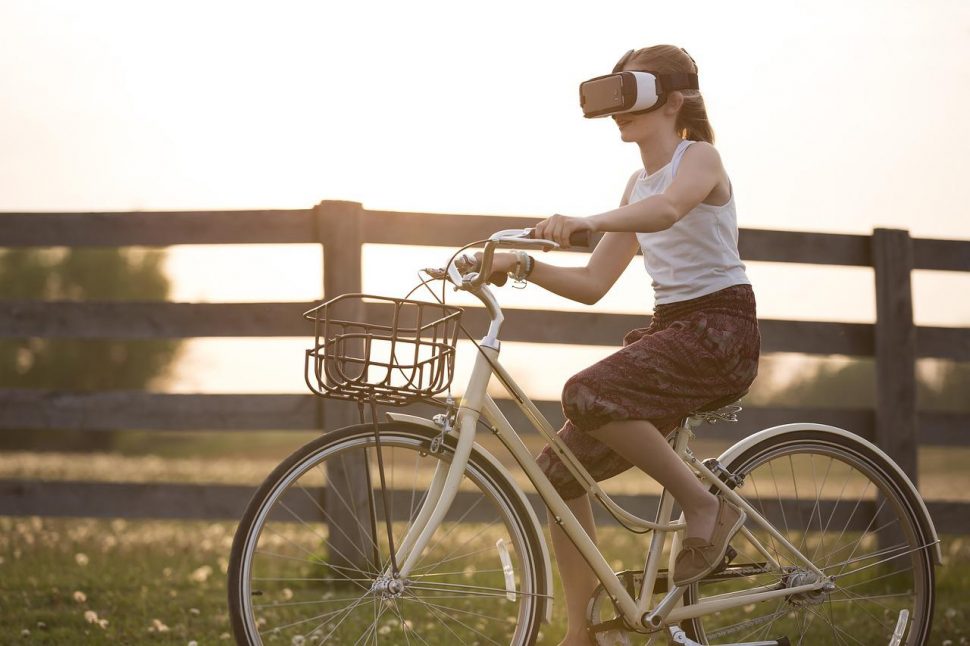Extended Reality: An Interview with Todd Cherner

The rise of extended reality (XR) technologies opens up promising frontiers of learner-centered, personalized, collaborative and immersive experiences in technology-rich education settings. The umbrella-term comprises mixed modalities, virtual reality and augmented reality. Todd Cherner, Program Director of the Master of Arts in Educational Innovation, Technology, and Entrepreneurship (MITE) at UNC Chapel Hill, is the editor of an upcoming open access publication on ‘Bridging the XR Technology-to-Practice Gap’. For AACE Review Todd shares his insights into the pedagogical implications for XR.
You are co-chair of the SIG X Realities and Learning SIG within the SITE Community. What are some of the exciting advancements in augmented, virtual and mixed reality that the special interest group is discussing and what gaps do you see in research and practice?
Right now, access to AR and VR is growing. With devices starting to become less expensive, it allows educators to begin acquiring and using these technologies with their students. Moreover, though Google Cardboard VR viewers have been sunset, it does allow for new innovations in accessibility to take their place. The challenge with AR and VR is that there is very little consensus about best practices about how to best use them for educational purposes. In my view, I see that the development of these technologies to benefit a variety of industries, such as real estate, retail, tourism, and more. The gap then arises in that those technologies exist and are becoming increasingly available for educators, however strategies and methods for using them in educational contexts have not been established. Through this book, we are working to bridge that gap by providing evidence-based strategies for using AR and VR for teaching and learning.
Personally, as faculty, what XR technologies are you using in the classroom?
For me, I am very interested in using a form of VR that I refer to as 360° videos and images. This form of VR allows individuals to use a handheld device that can record in 360° for capturing their environment. With minimal technical skills, individuals can upload these videos and images to platforms such as ThingLink and Pexels, among others, to edit and share them. Depending on how they are shared, other individuals can access them via link and QR codes or by embedding the content directly in a website or slide presentation. To me, I see a lot more utility and accessibility with 360° content as compared to computer-generated VR. For example, 360° content can be viewed on laptops, smartphones, and VR headsets while computer-generated VR often times can only be viewed on a VR headset. In addition, while deep technical skills and significant funds are needed to create computer-generated VR, educators with a camera can capture content the exact 360° videos and images they may need from their community to help them teach a lesson. That way, not only are 360° videos and images more accessible, teachers can create more individualized experiences for their students. (It should be noted 360° videos and images lack some of the functionality of computer-generated VR, and that is a tradeoff educators will need to be comfortable making when using 360° videos and images.)
Do XR technologies have the capacity to cause a paradigm shift in education?
Great question. In my view, I do not believe XR technologies are yet at a point when they can cause a paradigm shift in education. However, I think that has the potential to change in the future with the coming of the Metaverse. Let me emphasize that I am an ardent supporter of teachers and do not support technologies of any kind replacing teachers. I do not think that type of education will be beneficial for a large swath of students (though it may benefit a smaller pocket of students). In my view, I think XR technologies can be blended into classroom instruction and over time, I can see that integration growing, similar to the adoption of tablets and laptops in the classroom. I do believe that the Metaverse will accelerate this adoption, but there will be significant challenges related to equity and access that must be addressed. Our book is an early step in this work, as we see this book helping to disseminate best practices for using XR in an open-education resource that in-service teachers, teacher educators, and pre-service teachers can all use.
What are some of the unique attributes of XR technologies that can improve learning outcomes?
This is a big question that we are hoping to address with our book. In my thinking, which is expanding, XR technologies can be leveraged to provide students with virtual experiences that they might not have been able to have in other forms. I remember a long while ago that a colleague was telling me how when she was teaching low-income students in New Mexico, she would be very frustrated when her students would be asked questions on standardized tests about the beach because they had never been to the beach. Specifically, when the questions asked them about the look of sand and the flow of waves, her students did not know because they had not been to the beach and could not draw from that background knowledge when answering those test questions. That story from my colleague stayed with me and I see XR being beneficial because it can provide students a type of experience that they otherwise would not be able to have. I do acknowledge that my colleagues’ students would still need access to the devices and technologies to have the VR experiences, and I think that is something that we will need to address. However, by providing experiences to students in the form of VR, it can help improve learning outcomes.
How do you respond to sceptics who see a re-run of the hype around Second Life?
I think that is a fair concern, and I too am a person who logged onto Second Life one or two times and have not returned. However, technology evolves over time, and that cannot be discounted. In my view, I see social media offers an example. Consider early social media platforms like Six Degrees and MySpace compared to today’s social media platforms like Facebook, Instagram, Snapchat, and many others. While Second Life was an early iteration, social media have evolved and impacted our lives in many ways, both good and bad. From my perspective, I do believe that these newer experiences with XR will lead into something bigger than Second Life, so I do not see it as a rerun of an earlier technology or platform. Instead, I see XR as the evolution of technology, which I think will transform society and we must be prepared for that, again for good or bad.
I used to be extremely excited about the educational potential of web 2.0 and social media. Over the past decade, my attitude has shifted to a certain level of weariness. Where do you think XR technologies are headed?
Again, I think that is fair, and I see myself as a criticalist in this area. I think we need to be cautious as XR technologies move into educational contexts and identify how best to use XR for teaching and learning. Moreover, when challenges arise, we need to document and share them and then come together as a community to respond to them. Then, if the problem persists or equity issues continue to grow, we may need to pivot and try new approaches. For me, I like to use a design thinking approach where I try to understand the challenges from a variety of key stakeholders and then develop responses that are tested and modified. I believe if we force XR to “work” in education, that is a flawed approach. However, using an approach informed by understanding and testing may have better results. While I’m sure some people agree with me and other people may have different approaches, we need to allow educators the space to experiment with XR technologies, so they can decide how best to use them in their context, with appropriate supports, and I see this book as one of those supports.
Last but not least, let’s share the information about the book:
Until August 10, interested authors are to submit a 250-word abstract of the work they are proposing for this book to Dr. Todd Cherner via email, [email protected].
Access the Call for Chapters here: https://aace.org/wp-content/uploads/2022/06/XR-Book-Call.pdf
About:
 Dr. Todd Cherner specializes in using technology to promote informed citizenry and critical literacy. Cherner started his career as a high school English teacher in Florida before becoming a professor. As he gained experience working with teachers in both secondary and higher educational settings, he has honed his skills for identifying edtech that can be used for supporting student learning, collaboration, and engagement.
Dr. Todd Cherner specializes in using technology to promote informed citizenry and critical literacy. Cherner started his career as a high school English teacher in Florida before becoming a professor. As he gained experience working with teachers in both secondary and higher educational settings, he has honed his skills for identifying edtech that can be used for supporting student learning, collaboration, and engagement.
